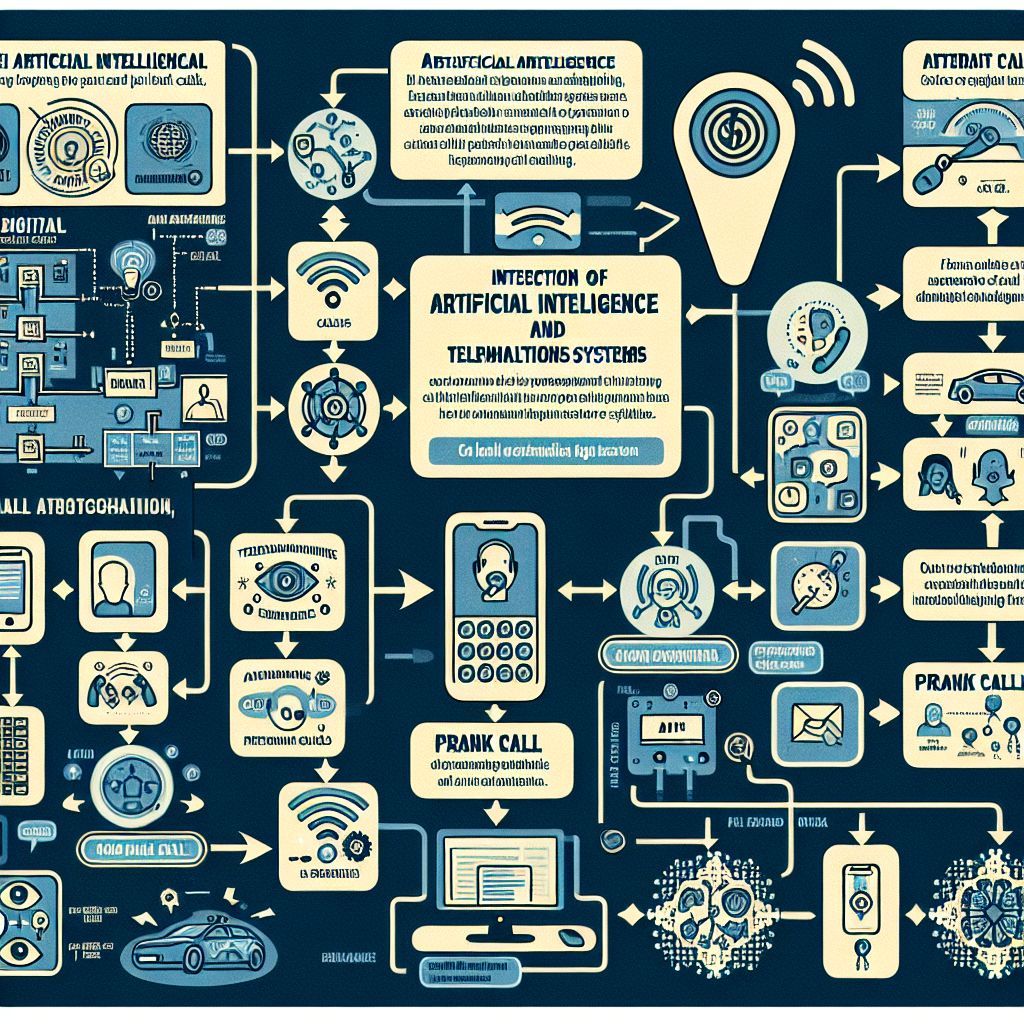
As we herald in the era of technological sophistication, we must also brace ourselves for the evolution of some distressing practices, one of them being prank or nuisance calls. Traditionally, such calls were placed manually; however, recent innovations and the digital boom have given rise to automated processes that exponentially increase the quantity and frequency of these bothersome intrusions. We find ourselves in a digital age where prank calling isn't just a misguided juvenile act but a potential tool for information phishing and fraud.

Businesses and individuals alike face the brunt of these persistent calls, bringing about a host of negative effects - from mere annoyance to substantial financial loss. To make matters worse, innovative technologies such as caller ID spoofing provide these rogue callers with a veil of anonymity, making tracking and identification exceedingly difficult. Not only that, but these fraudulent calls can also serve as a gateway to more sinister forms of cybercrime such as data breaches and ransomware attacks.
In light of these troubling actions, the need for a counter-technology is paramount – one that can detect and handle these prank or nuisance calls efficiently. We see the rise of such technologies like automated detection systems, which integrate artificial intelligence and machine learning to analyze, flag, and, if necessary, block these inopportune calls. This presents a beacon of hope in our efforts to thwart the potentially disruptive outcomes of these calls.
As nuisance calls continue to inconvenience millions worldwide, the emergence of advanced technology like Artificial Intelligence (AI) for Automated Detection and Handling of Prank or Nuisance Calls is a major relief to many. AI detection techniques utilizing different algorithms are just the game-changer we need in detecting patterns indicative of nuisance calls.
One of the key techniques is Voice Recognition. Actually, voice recognition is an AI technology that is crucial in distinguishing between authentic calls and nuisance ones. One of the fascinating features of this method is its capability in identifying repeat offenders. It essentially analyzes the voice patterns and, if they match with previously flagged callers, the call is automatically tagged as a nuisance call which makes it easier for the system to handle it appropriately.
Another solid approach in use is Behavioral Analytics. This AI method considers the behavior pattern of callers. For instance, if a caller incessantly dials a number or many numbers, their behavior could lead to the call being classified as nuisance or a prank. This is essentially built upon the principle that nuisance callers generally do not conform to normal behaviors of regular callers.
Lastly, the combination of the two techniques has proven to be extremely effective. By unifying voice recognition with behavioral analytics, AI algorithms are now more efficient and accurate in identifying and handling of prank and nuisance calls. This tandem has not just resulted in fewer false positives, but also increased the overall reliability of Automated Detection Systems. The future, indeed, does seem bright in our war against nuisance callers.
In today's digital age, security is a paramount concern revolving around telecommunications. One such security issue pertains to the actions of pranksters and spammers, who disrupt everyday communications with prank or nuisance calls. Thankfully, Artificial Intelligence (AI) has provided solutions to this issue. The introduction of AI-powered tools has revolutionized the detection and handling of these annoying calls. Now, let's delve into how such systems can be integrated with existing infrastructure.

AI systems designed to combat prank calls do not operate autonomously but are meant to work hand in hand with current telecommunication systems. The technology is engineered to seamlessly blend with pre-existing call security protocols. This impeccable integration ensures no disruptions in the normal functioning of these systems – a crucial factor for any telecommunication operations.
The implementation of AI solutions integrates autonomously with your existing hardware and software systems. It does this by working in the background, monitoring incoming calls, and utilizing advanced AI algorithms to identify patterns in caller ID spoofing, voice change modulation, and even conversation patterns. These patterns can indicate whether a call is legitimate or a probable prank or nuisance. In case of the latter, it autonomously implements predefined spam prevention measures.
Furthermore, AI systems extend a two-way benefit. While they usher in advanced nuisance call filtering techniques, they also provide the opportunity to upgrade and enhance the existing telecommunication infrastructure and converting it into a smart system. Thus, AI integration is not merely about solving the nuisance call issue but about streamlining and strengthening the entire telecommunication process.
AI systems' integration is the way forward in tackling the persistent issue of nuisance calls. With its seamless integration and vast benefits, it ensures a safer and efficient telecommunication environment for everyone involved.
With nefarious intentions veiled behind seemingly harmless interactions, identifying prank or nuisance calls can be a complex task. Here's where Artificial Intelligence (AI) comes into play, specifically, Adaptive AI Learning.
Adaptive AI Learning utilizes Machine Learning (ML) algorithms, training systems to evolve as they interact with data. The sophisticated architecture enables them to learn from each interaction, thereby improving their efficiency and accuracy over time.
When it comes to dealing with prank calls, these AI systems scan and analyze the features of incoming calls - like caller information, frequency of calls, duration, and even voice pattern technologies in advanced systems. As the AI system encounters more prank calls, the adaptive learning mechanism enables it to recognize the nuances and patterns associated with such calls better.
Upon detecting a probable prank call, these AI systems can handle the situation by either blocking the caller or routing the call to an automated response system. Hence, not only do such systems prevent harassment from recurring prank calls, but they also free up resources that can be used to respond to genuine callers.
Yet, the real genius lies in the continuous learning capability of adaptive AI systems. Every correct and incorrect prediction is gleaned for insights to fine-tune the AI model, optimizing its future predictions.
Optimization and intelligence, this potent combination is the driving factor behind the rising popularity of AI and ML applications in various industries. When it comes to handling annoying pranksters, adaptive AI systems are the 'ringing' evidence of advanced technology doing its bit to ensure peace of mind.
Technological advances have revolutionized how we deal with unwanted nuisance or prank calls. Recently, there has been a noticeable surge in the implementation of AI-based Automatic Detection Systems to combat this issue effectively. These systems not only reduce these pesky calls but significantly enhance productivity by saving employees' time.

Beneficial real-world applications of these AI systems can be seen in various segments. The New York Times reported an interesting case study where an insurance company implemented an AI system that successfully decreased nuisance calls by 25% in just the first quarter of its implementation. This reduction not only made their working days smoother but immensely improved their overall operational efficiency.
On a larger scale, telecom giants such as AT&T and Verizon have incorporated AI systems into their services, assisting millions in avoiding persistent prank calls. As reported by BusinessWire, AT&T claimed to have blocked over 12 billion prank calls since 2016 using their AI system AT&T Call Protect.
As far as the statistics go, a research study by PLOS revealed that companies that implemented Automated Detection Systems saw a mean productivity increase of 20%. This productivity gain was primarily attributed to the time saved from not having to engage with nuisance calls.
In conclusion, the future appears bright for the integration of AI systems in combatting prank or nuisance calls. As the technology becomes more refined, it offers a significant potential to further improve productivity and create a more efficient work environment.
The telecommunication industry is acutely aware of the detriment posed by prank and nuisance calls. In the quest to combat this ongoing issue, there has been a significant focus on the development of Automated Detection and Handling systems. These systems heavily incorporate ongoing advancements in Artificial Intelligence (AI) and machine learning.
The future outlook for AI technology in nuisance call detection is promising and rapidly evolving. For instance, today's AI-powered analytic tools are expected to grow more robust, able to detect patterns and trends associated with nuisance calls with increasing precision. The evolution will not stop there. Predictive analytics, a subset of AI, will advance to highlight potential nuisance callers by analyzing and interpreting vast data sets in real-time.
Furthermore, the advancement in Natural Language Processing (NLP), a branch of AI, will also significantly enhance the handling of prank calls. NLP aids computers in understanding, interpreting, and manipulating human language. As it improves, so will its ability to understand the nuances of such calls, thereby improving the overall efficiency of the detection and handling systems.
This progress in AI technologies will not only revolutionize the landscape of telecommunication security, but it also paves the way for more resources to be re-allocated from handling prank calls towards focusing on legitimate customer requests. This translates into happier customers, better services, and, subsequently, an improved company reputation.
In conclusion, while the future brings with it an unknown element, what's clear is that the AI infusion into the automated detection and handling of prank and nuisance calls is here to stay. The advancements in AI technologies provide ample cause for optimism in our battle with prank calls.
Start your free trial for My AI Front Desk today, it takes minutes to setup!








